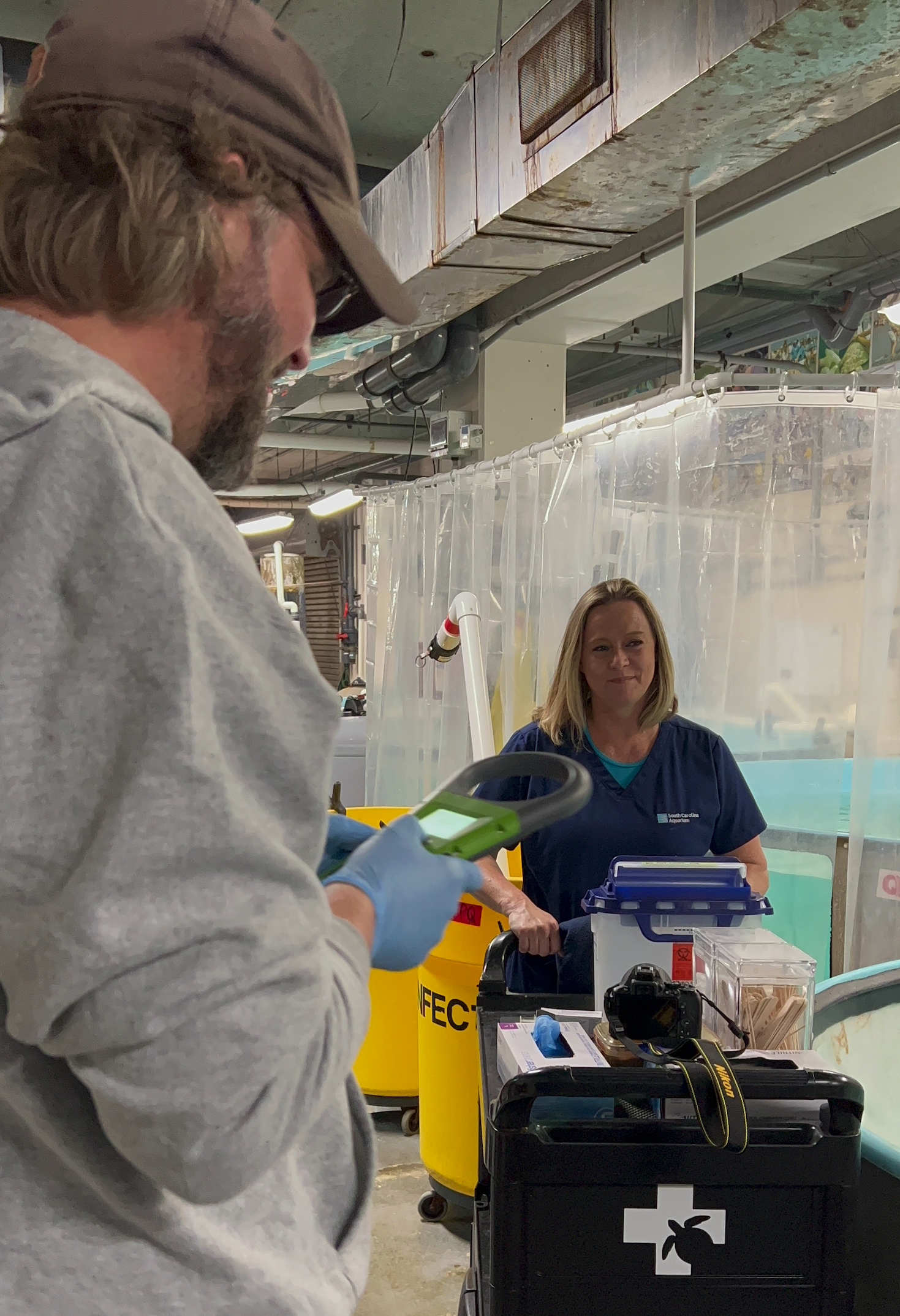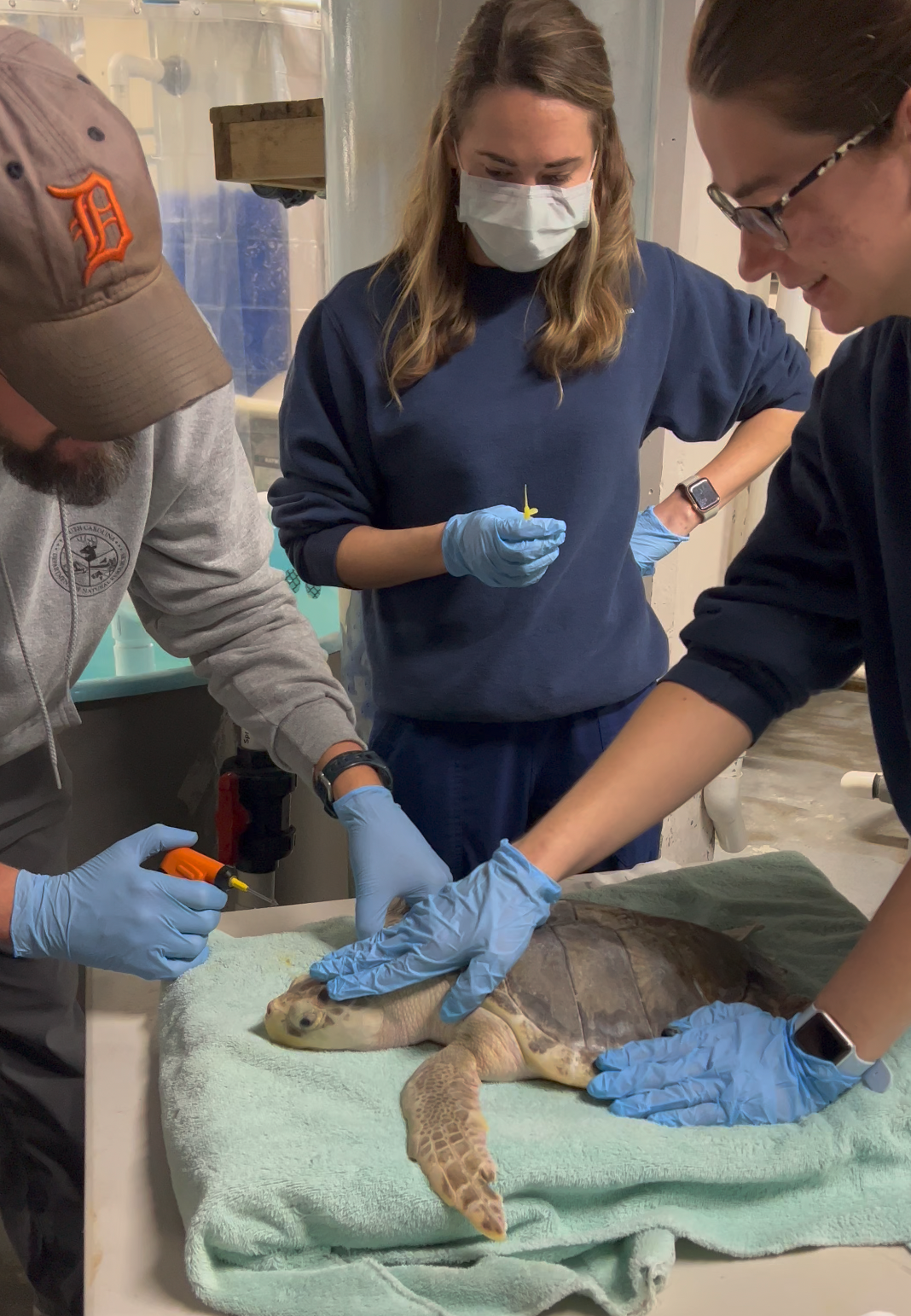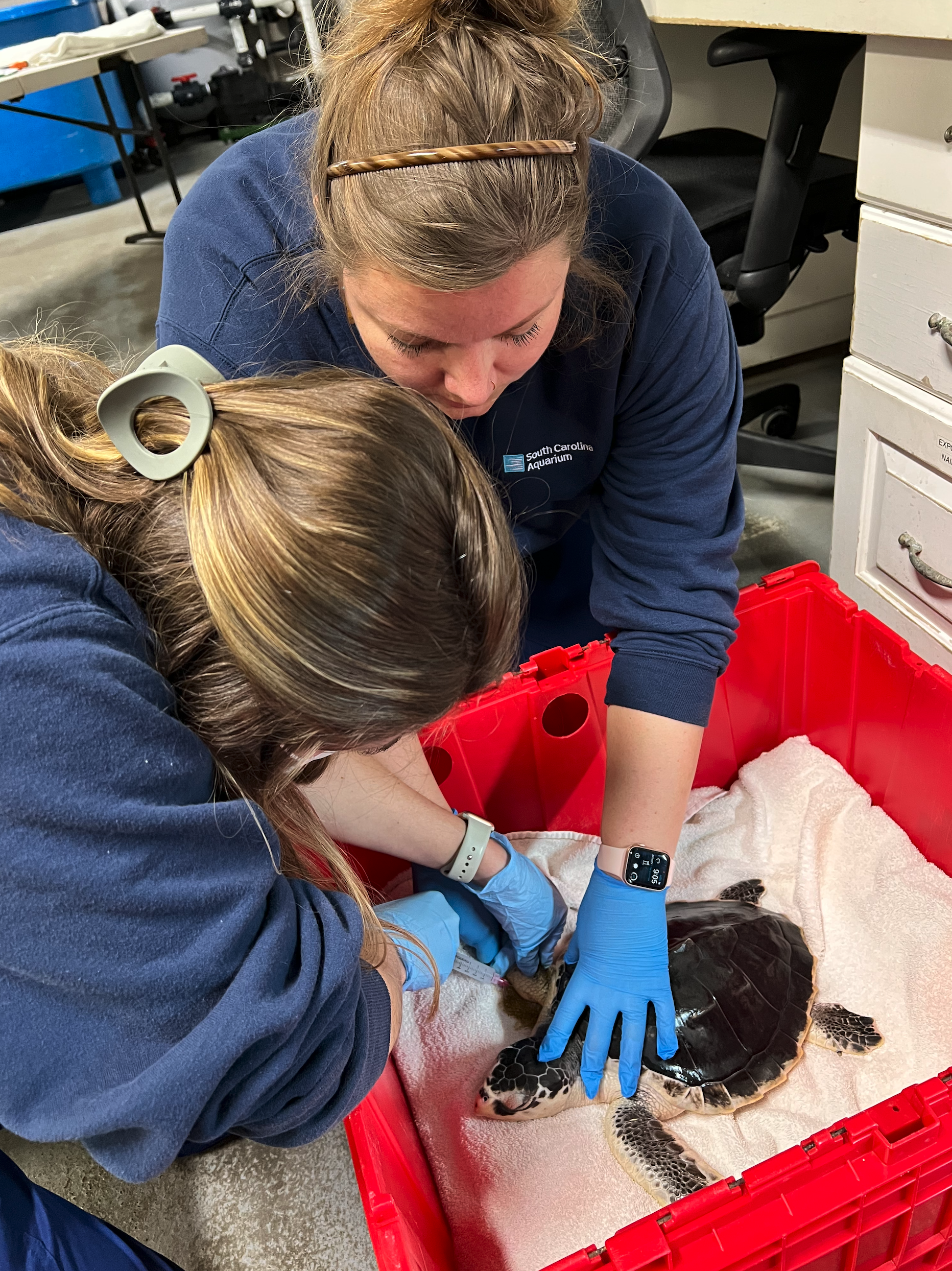It’s almost April in Charleston, which means that the busy season here at the Sea Turtle Care Center™ is upon us! While we dislike seeing any animal in a desperate situation, we’re fortunate that we have the resources and support to rehabilitate and release as many of our patients as we possibly can. Part of this process involves tagging each individual sea turtle prior to releasing them back into the big blue.
As part of the Care Center’s release protocol, we tag turtles with the help of our friends at the South Carolina Department of Natural Resources (SCDNR). When one of our sea turtle patients is approaching a clean bill of health, they’re determined to be a pre-release candidate. They undergo an in-depth workup, including a thorough physical exam, blood tests and tagging by SCDNR. While this means they’re one flipper closer to release, it doesn’t make it official quite yet! Not only do we need to evaluate the patient’s bloodwork and exam results to determine release readiness, but there’s a waiting period following the tag application to ensure the area heals properly.
When it comes to the type of tag placed on the sea turtle, there are three different kinds that are available. So, how do we determine which type to use?
 The Aquarium and the SCDNR collaborate on the tagging process.
The Aquarium and the SCDNR collaborate on the tagging process.  An SCDNR employee inserts a PIT tag into a sea turtle patient, with Dr. Lauren's oversight.
An SCDNR employee inserts a PIT tag into a sea turtle patient, with Dr. Lauren's oversight. Passive Integrated Transponder | Microchip
Here at the Care Center, we use a passive integrated tag (PIT) for our smaller patients, like juvenile green and Kemp’s ridley sea turtles. Similar to microchipping a pet, this tag is a tiny, metal chip, no bigger than a grain of rice, that is placed under the turtle’s skin in one of their front flippers using a needle. A drop of tissue glue is then applied to the sea turtle’s skin to close the opening and to prevent infection. If the animal is found by another organization, a scanner can be used to locate and read the chip. Once scanned, this tag relays the individual identification number of that specific sea turtle. Researchers use this information to check an international sea turtle tag inventory (managed by the Archie Carr Center for Sea Turtle Research) for the turtle’s medical background. Similar to a hospital record, this allows the facility and researchers to consider the medical history of the animal when creating a care plan.
Flipper Tag | Identification Number
For our larger patients, like the loggerheads or the more mature Kemp’s ridleys, we use a flipper tag in addition to a PIT tag. This metal flipper tag is placed on the back of a front flipper and uses an identification number linked to data. Though it is not a satellite tag, the tag’s identification number acts as a reference point should the sea turtle require help again.
Satellite Tag | Location Pings
If a sea turtle is selected to be part of a research study, a satellite tag is used to provide the most accurate and in-depth data available on that specific patient. These tags are much larger in size and are applied to the carapace of a larger turtle using an epoxy adhesive. With this tag, researchers receive satellite pings that contribute to overarching research, like tracking an animal’s migration patterns. Due to the large cost and numerous permits required for a single satellite tag, our Care Center has used this tag minimally since the Aquarium’s opening in 2000.
The purpose of tagging is research — the more data we have, the better we can understand species-specific behaviors, reproductive activities, migration patterns and more.
A sea turtle’s tag information goes into a database to which all states have access. Not only does this open up lines of communication and research between fellow researchers, but it also helps identify sea turtles that may have been previously treated at a facility — like in the case of our former patient, J.K. Rowling, a loggerhead who was admitted to our Sea Turtle Care Center with debilitated turtle syndrome. Before coming to our facility, J.K. was previously treated and released by the Georgia Sea Turtle Center. Thanks to tagging, we were able to use J.K.’s identification number to locate where they had been treated beforehand and reach out to that facility for J.K.’s past history. Our Care Center rarely admits tagged patients, so this was the perfect example of how a tag can be beneficial. Without it, we would have been unaware of J.K.’s medical history.
 Dr. Lauren and Cait, one of our senior sea turtle biologists, prep a sea turtle patient for tagging.
Dr. Lauren and Cait, one of our senior sea turtle biologists, prep a sea turtle patient for tagging. Tagging isn’t just utilized in rehabilitation facilities — it comes in handy in the field, too. For example, SCDNR may tag a nesting sea turtle or a turtle that’s been caught in a trawl. Whenever there’s a chance to tag a sea turtle without interrupting its natural behaviors or causing it stress, researchers seize the opportunity!
After all, the more we learn about sea turtles, the better we can conserve and protect them.
Do you have another question for our experts?
Published March 30, 2022


